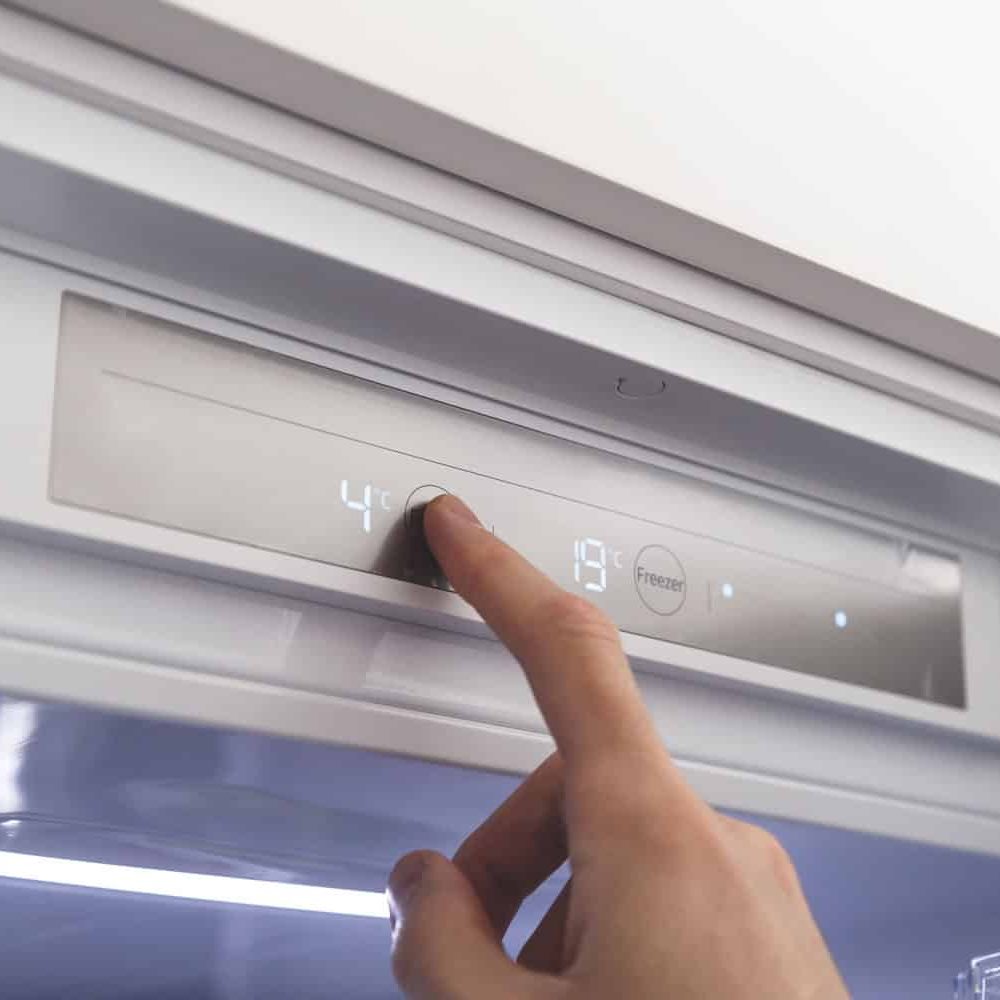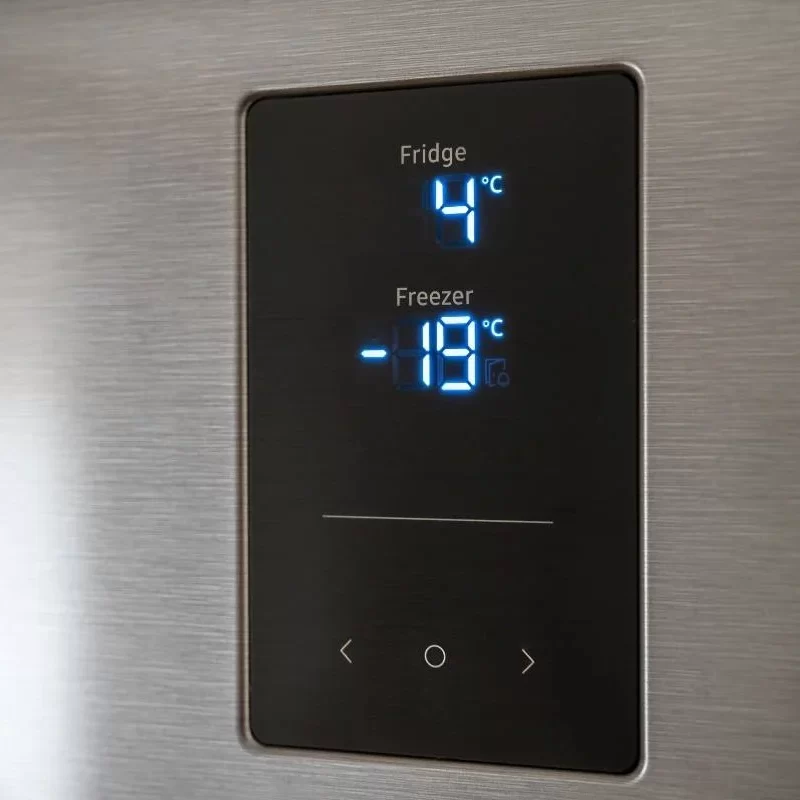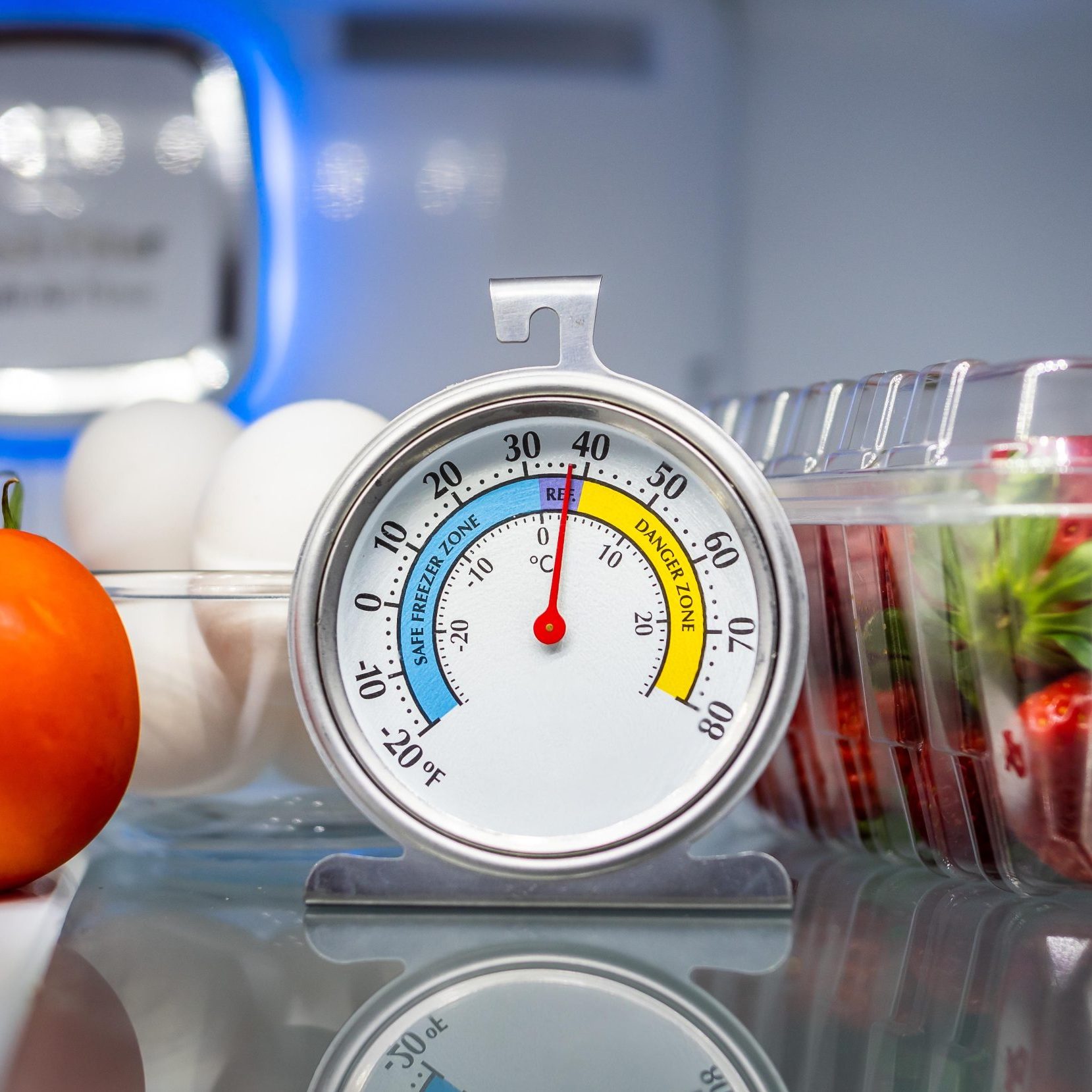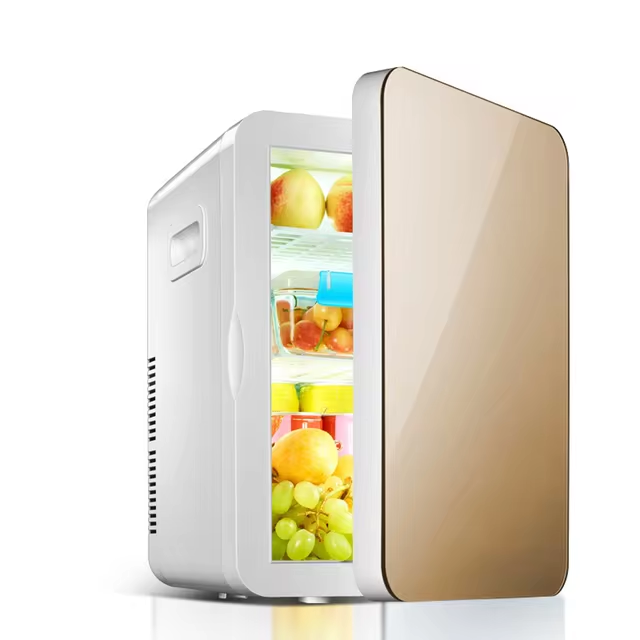The Importance of Proper Refrigerator Temperature
Maintaining the correct refrigerator temperature is paramount for preserving the freshness of food and ensuring food safety. Whether you’re a homemaker striving to reduce food waste or someone keen on preventing foodborne illnesses, understanding how to manage your refrigerator’s temperature can make a significant difference. This comprehensive guide explores everything you need to know about refrigerator temperature, from optimal settings and factors influencing temperature stability to the impact on different types of food and troubleshooting common issues.
The Importance of Maintaining the Right Refrigerator Temperature
Refrigerators play a critical role in our daily lives by keeping perishable items fresh and safe for consumption. However, the effectiveness of a refrigerator largely depends on maintaining the appropriate temperature. Incorrect temperatures can lead to spoiled food, increased risk of foodborne illnesses, and even higher energy bills. Here are some key reasons why maintaining the right refrigerator temperature is essential:
Preventing Food Spoilage
Perishable foods like dairy products, meats, and vegetables are highly susceptible to spoilage if not stored at the correct temperatures. Bacteria that cause food spoilage thrive at warmer temperatures, leading to mold growth, unpleasant odors, and texture changes. By keeping the refrigerator at the recommended temperature, you can significantly extend the shelf life of these items.
Ensuring Food Safety
Beyond spoilage, maintaining the right temperature is crucial for preventing the growth of harmful bacteria such as Salmonella, E. coli, and Listeria. These pathogens can cause severe foodborne illnesses, which are especially dangerous for vulnerable populations like children, the elderly, and those with compromised immune systems. A properly cooled refrigerator inhibits bacterial growth, reducing the risk of contamination.
Energy Efficiency and Cost Savings
Refrigerators are one of the most energy-consuming appliances in a household. Operating at an optimal temperature not only ensures food safety and freshness but also enhances the appliance’s energy efficiency. Incorrect temperatures can cause the refrigerator to work harder, leading to increased electricity consumption and higher utility bills.
Preserving Nutritional Value and Taste
Temperature fluctuations can affect the nutritional quality and taste of food. For instance, vitamins can degrade, and flavors can diminish if food is not stored properly. Maintaining a steady refrigerator temperature helps preserve the nutritional integrity and taste of your food, ensuring that meals remain both healthy and enjoyable.
Optimal Refrigerator Temperature Settings
Achieving and maintaining the optimal refrigerator temperature is crucial for maximizing the benefits mentioned above. The standard guidelines recommend specific temperature ranges to ensure both food safety and energy efficiency.
Recommended Temperature Range
The ideal temperature for a refrigerator is between 35°F and 38°F (1.7°C to 3.3°C). This range is cold enough to slow bacterial growth without freezing the food. Specifically, a temperature of 37°F (3°C) is often recommended as the sweet spot for most refrigerators.
Freezer Temperature Considerations
While the main compartment should be kept between 35°F and 38°F, the freezer section of the refrigerator should be maintained at 0°F (-18°C). This temperature ensures that food remains frozen solid, preventing the formation of large ice crystals that can degrade food quality over time.
Avoiding the Danger Zone
The “danger zone” for perishable foods is between 40°F and 140°F (4.4°C and 60°C). In this temperature range, bacteria can multiply rapidly, increasing the risk of foodborne illnesses. It is crucial to ensure that your refrigerator maintains temperatures below this zone to keep your food safe.
Factors Influencing Refrigerator Temperature Stability
Several factors can impact the stability and consistency of your refrigerator’s temperature. Understanding these factors can help you maintain the ideal conditions for your food storage.
Door Usage and Sealing
Frequent opening and closing of the refrigerator door can cause temperature fluctuations. Each time the door is opened, warm air enters, forcing the refrigerator to work harder to return to the set temperature. Additionally, a faulty door seal can allow cold air to escape and warm air to enter, compromising temperature stability.
Ambient Room Temperature
The temperature of the room where the refrigerator is located can significantly affect its internal temperature. In warmer environments, the refrigerator has to work harder to maintain cold temperatures, which can lead to inefficiencies and inconsistent cooling. Ensuring adequate ventilation around the appliance can help mitigate this issue.
Overfilling and Air Circulation
Overloading the refrigerator can block air vents and impede proper air circulation. This lack of airflow prevents even distribution of cold air, leading to hot spots and uneven cooling. It’s important to organize the contents of your refrigerator to allow adequate space for air to circulate freely.
Frequency of Door Opening
High-frequency door opening can disrupt the internal temperature of the refrigerator. Every time the door is opened, cold air escapes, and warm air infiltrates, forcing the appliance to work harder to compensate. Minimizing the frequency and duration of door openings can help maintain a stable temperature.
Placement of Food Items
The placement of food within the refrigerator affects temperature distribution. Items placed too close to the cooling elements can freeze, while those positioned away may not stay sufficiently cold. Proper arrangement ensures that all items are stored at consistent temperatures.
Types of Refrigerators and Their Temperature Control Mechanisms
Different types of refrigerators come with varying temperature control mechanisms, each offering unique features that contribute to maintaining optimal cooling.
Top-Freezer Refrigerators
Top-freezer refrigerators feature a freezer compartment located above the refrigerator section. They are known for their energy efficiency and consistent cooling performance. Temperature control is typically managed by a thermostat that regulates the cooling cycle based on the interior temperature.
Bottom-Freezer Refrigerators
In bottom-freezer models, the freezer is positioned below the main refrigerator compartment. This design places frequently accessed items at eye level, improving convenience. These models often incorporate more advanced temperature control systems, allowing for precise adjustments and better air circulation.
Side-by-Side Refrigerators
Side-by-side refrigerators have freezer and refrigerator compartments aligned vertically on either side. They offer ample storage space and easy access to items. Temperature control in these models often includes independent settings for each compartment, providing flexibility in managing different storage needs.
French Door Refrigerators
French door refrigerators combine the aesthetics of a double-door refrigerator with the efficiency of a side-by-side design. They typically feature multiple compartments, including dedicated zones for fresh produce and beverages. Advanced temperature control systems in these models allow for customized settings, ensuring optimal conditions for various types of food.
Compact and Mini Refrigerators
Compact and mini refrigerators are designed for limited spaces, such as dorm rooms or offices. While smaller in size, they still maintain the essential features of temperature control, though their efficiency can be influenced more easily by external factors due to their limited capacity and ventilation space.
Impact of Refrigerator Temperature on Different Food Types
Different foods require specific temperature conditions to maintain their quality and safety. Understanding how refrigerator temperature affects various food types can help you store them appropriately.
Dairy Products
Dairy products like milk, cheese, and yogurt are highly perishable and require consistent cooling to prevent spoilage. Storing them at the recommended refrigerator temperature slows bacterial growth, ensuring they remain fresh for longer periods. It’s best to keep dairy products in the main compartment rather than the door, where temperatures can fluctuate more frequently.
Meat and Poultry
Raw meat and poultry are particularly susceptible to bacterial contamination. Keeping them at or below 40°F (4.4°C) is essential to prevent the growth of harmful bacteria. It’s advisable to store these items on the bottom shelf to avoid cross-contamination with other foods and to maintain a stable temperature.
Fruits and Vegetables
Fruits and vegetables have varying storage requirements, but maintaining a consistent refrigerator temperature helps preserve their freshness and nutritional value. Some produce may benefit from different humidity levels, so using the designated crisper drawers with controlled settings can enhance their shelf life.
Eggs and Dairy Alternatives
Eggs and dairy alternatives like almond milk or soy yogurt also require proper refrigeration to maintain safety and quality. These items are best stored in their original packaging on middle shelves, where temperatures are more stable compared to the door compartments.
Ready-to-Eat and Processed Foods
Ready-to-eat meals and processed foods like deli meats, sauces, and leftovers should be kept at the optimal refrigerator temperature to prevent spoilage and maintain taste. Labeling and organizing these items can help you keep track of their freshness and reduce the risk of consuming expired products.
Troubleshooting Common Refrigerator Temperature Issues
Even with proper maintenance, refrigerators can sometimes experience temperature-related problems. Identifying and resolving these issues promptly is crucial for maintaining food safety and appliance efficiency.
Refrigerator Not Cooling Enough
If your refrigerator is not cooling adequately, check the following:
- Temperature Settings: Ensure the thermostat is set within the recommended range (35°F to 38°F).
- Air Circulation: Verify that there is sufficient space around the appliance for proper ventilation.
- Door Seals: Inspect the door seals for damage or wear that could be allowing warm air to enter.
- Condenser Coils: Clean the condenser coils to remove dust and debris that can impede cooling performance.
- Evaporator Fan: Ensure the evaporator fan is functioning correctly, as a faulty fan can disrupt air circulation.
Freezer Not Freezing Properly
If the freezer compartment is not maintaining the desired temperature:
- Temperature Setting: Confirm that the freezer thermostat is set to 0°F (-18°C).
- Frost Buildup: Check for excessive frost buildup, which can obstruct airflow. Defrost the freezer if necessary.
- Door Seals: Make sure the freezer door seals are intact and not allowing warm air in.
- Air Vents: Ensure that air vents within the freezer are not blocked by food items.
Inconsistent Temperatures
Inconsistent temperatures can be caused by several factors:
- Frequent Door Opening: Minimize the frequency and duration of door openings to maintain a stable internal temperature.
- Overloading: Avoid overfilling the refrigerator, as it can disrupt airflow and lead to uneven cooling.
- Faulty Thermostat: A malfunctioning thermostat may fail to regulate temperature effectively. Consider replacing it if necessary.
- Defrost System Issues: Problems with the defrost system can cause ice buildup, affecting temperature consistency.
Excessive Frost Buildup
Excessive frost can impair the refrigerator’s cooling efficiency:
- Defrost Cycle: Ensure the defrost cycle is operating correctly. A malfunctioning defrost timer or heater can lead to frost accumulation.
- Door Seals: Inspect doors for proper sealing to prevent moisture from entering and causing frost buildup.
- Humidity Levels: High humidity levels in the environment can contribute to increased frost formation. Use dehumidifiers if needed.
Best Practices for Monitoring and Adjusting Refrigerator Temperature
Regular monitoring and appropriate adjustments are essential for maintaining optimal refrigerator temperature. Implementing best practices can help you ensure that your appliance operates efficiently and keeps your food safe.
Use a Reliable Thermometer
While most refrigerators come with built-in thermometers, using an accurate, standalone appliance thermometer provides a precise reading of the internal temperature. Place the thermometer in the center of the refrigerator to get an accurate depiction of the overall temperature.
Avoid Frequent Temperature Changes
Frequent adjustments to the refrigerator temperature can lead to instability and increased energy consumption. Instead, set the temperature once and allow the appliance time to stabilize before making further changes.
Organize Your Refrigerator
Proper organization enhances airflow and maintains consistent temperatures. Group similar items together, use clear containers for visibility, and avoid stacking items too high to prevent blocking air vents.
Regular Maintenance
Performing regular maintenance tasks, such as cleaning condenser coils, inspecting door seals, and defrosting when necessary, helps maintain the refrigerator’s efficiency and temperature stability.
Batch Cooling
When adding large quantities of warm items to the refrigerator, do so in batches rather than all at once. This prevents significant temperature spikes and allows the appliance to adjust gradually.
Seasonal Adjustments
In extreme weather conditions, you may need to adjust the refrigerator temperature settings slightly. For instance, in very hot climates, setting the refrigerator a bit cooler can compensate for the increased ambient temperature.
 Conclusion: Mastering Refrigerator Temperature for a Healthier Home
Conclusion: Mastering Refrigerator Temperature for a Healthier Home
In conclusion, understanding and maintaining the correct refrigerator temperature is a fundamental aspect of kitchen management that impacts food safety, freshness, and overall household efficiency. From selecting the right temperature settings and organizing your fridge effectively to utilizing modern technologies and troubleshooting common issues, mastering refrigerator temperature ensures that your food remains safe and delicious while minimizing waste and energy consumption. By prioritizing proper temperature control, you contribute to a healthier home environment and make informed decisions that benefit both your family and the planet.



